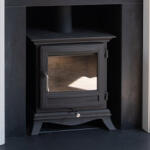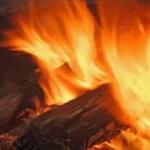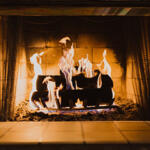

The Burning Question – Which Logs To Burn?
As the weather turns we thought this week’s blog should be all about which wood to burn on your fire or wood burning stove. Knowing what logs to use can save you money and time so for a quick guide to wood, read on…
Gone are the days when wood was wood and you just chucked it on the fire. So let us guide you through the wonderful world of logs. There are a number of factors that affect the burn of a log. These are:
- What type of tree the log came from
- How the logs have been stored since they were chopped
- Whether they have been dried
Softwood logs are usually a mix of conifers (pine, fir, spruce and cedar). Softwood tends to be a lower density than hardwood (i.e. the same size log will be lighter). Because of this, softwood burns faster and is easier to light. So if you are looking for a fire that is easy to start and burns quickly, softwood is your best bet. Softwood logs are useful to get a fire started. http://www.londongases.co.uk/view/softwood-logs-125kg
Hardwood logs tend to be a mixture of birch, beech, elm, ash, oak, cedar and lime wood. They are a higher density and heavier than the softwood logs. Due to the density they have a higher heat output and are longer lasting compared to softwood. Hardwood logs are excellent to keep your fire going. http://www.londongases.co.uk/view/seasoned-hardwood-logs-125kg
Logs can be seasoned which means the logs are left for a season to dry and reduce the moisture content. Seasoned logs can contain up to 40% less moisture and so therefore burn much much better. It also helps to reduce the amount of “spitting” the log does and therefore how well your carpet survives! These logs are easier to light and generate more heat in a shorter space of time. I’m sure you aren’t surprised to learn that both our hard wood logs and soft wood logs are seasoned.
Kilndried logs are hardwood that have been dried in a kiln. The process of kiln drying leads to fire logs with a moisture content of less than 20%. Kilns are fuelled by renewable biomass fuels. Their reduced moisture content ensures they burn hotter for longer increasing the efficiency of your stove or fire. In terms of heat output, one kiln dried log is roughly equivalent to three unseasoned wood logs, making them more economical in the long run. http://www.londongases.co.uk/view/kiln-dried-hardwood-logs-125kg
If you would like some more information visit our website and look at our Log Chooser. We’ve put this together to help our customers compare all the logs we sell for heat efficiency, burn ratings and CO2 output. Just click here to have a look. http://www.londongases.co.uk/coal-and-logs-chooser
All our logs come from sustainably managed woodlands in the UK. No matter what type, they are cut to approximately 250mm-330mm in length and 40mm to 160mm in diameter. This makes them suitable for both modern and traditional size fireplaces, as well as woodburners and a range of appliances.
After delivery of your logs, they should be stored under cover but open to allow free air circulation. For best results, bring them inside the house a few days prior to use to ensure they are as dry as possible for burning.
So now with your new wealth of knowledge, bag yourself a bag of logs and enjoy your fire.
To get more hints and tips visit our facebook page facebook.com/londongases and like us!
